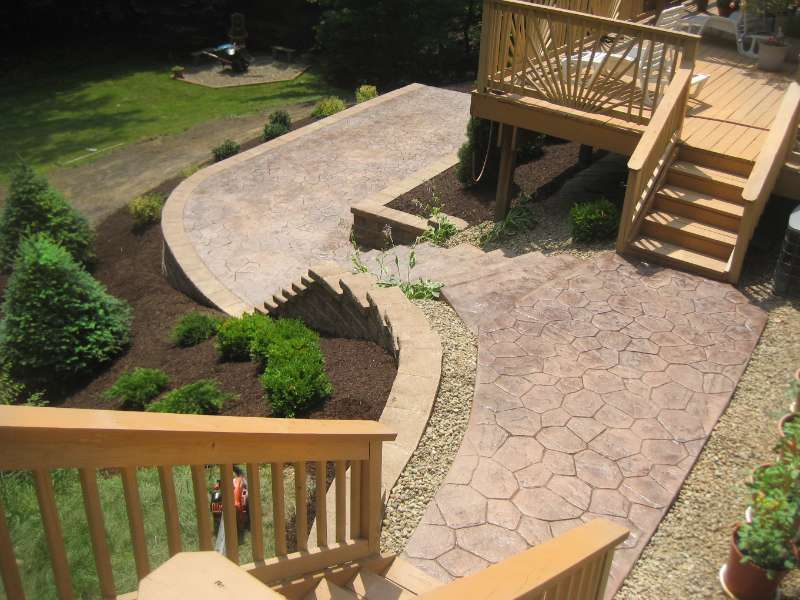Transform Your Outdoor Living Space
Concrete installation is not your typical DIY project. It is unforgiving and can get expensive if not done right the first time. As a premium, full-service, design-build contractor, the process of creating stunning and long lasting stamped concrete patios can start and end with us.
3 Benefits of Stamped Concrete
Little Maintenance
No settling of stones and no weed sprouts
Diversity
Various colors and patterns available
Budget Friendly
Have the freedom to customize without premium upcharges.
1. Establish an overall soil support system
Establish an overall soil support system to protect your patio for years to come. A strong subbase (compacted gravel or limestone) must not only meet appropriate thickness requirements (at least 2-4 inches), but must be uniformly sound in order to avoid support deficiencies across all edges and joints. A base course of finer material can further assist with creating a flat, uniform foundation. This reduces the risk of cracking by allowing the concrete slabs on top to slide as they naturally shrink during the drying phase. A well compacted base foundation also produces a vital barrier to groundwater that could penetrate the slab.
2. Place forms
Place forms precisely in a manner to contain concrete in the desired shape and allow for proper drainage sloping.
3. Install a layer of wire mesh
Install a layer of wire mesh to solidify the concrete’s structural integrity, thus reinforcing overall impact resistance and helping to contain cracking.
4. Pour, screed, and finish colored concrete
Pour, screed, and finish colored concrete. This time sensitive process requires great technical and even artistic ability in forming a level canvas suitable for decorative stamping.
5. Add release agent
Add release agent. This pigment, in combination with the concrete’s base integral color, helps create accent and texture and thus replicate the appearance and feel of natural stone.
6. Imprint concrete
Imprint concrete through use of pre-designed stamps or skins.
7. Install contraction joints
Install contraction joints. Concrete, while initially a fluid, moldable mass, eventually hardens and continues to shrink into its final state. Such joints minimize overall restraint, alleviate stress, and contribute as preventative measures for random cracking.
8. Apply sealant
Apply sealant to enhance and extract color from the concrete. Additionally, sealant offers protection to discoloration and stains.
As our last step, together we will do a final walk-through of the completed project and provide you with the guidance needed to ensure your investment is protected and looking stunning for years to come.



